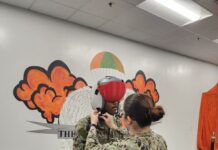
There are no tower blocks, medicinal plants are grown on-site and the facility can generate its own energy as well as deal with its own waste.
Qatari authorities have commissioned the work of Dutch architectural practice OMA and British engineering company Buro Happold, to build a sustainable hospital on a 1.3-million-square-metre site near Doha.
According to Reinier de Graaf, partner at OMA, the goal would be able to take care of people and the environment they will be evolving in, hence the idea of a hospital that “builds itself”.
Many contemporary hospitals are, De Graaf said, large, anonymous, ugly and distant from the people they are built to serve. “It’s fair to say that it’s probably largely the fault of hospitals that people dislike modern architecture, because they represent the worst of modern architecture,” he added.
With the goal of becoming a regional standard in the future, the construction is said to have no tower blocks; medicinal plants are grown on-site and the facility can generate its own energy as well as deal with its own waste – and obviously, it will be built by 3D printing robots.
Architects plan the hospital with 1,400 beds, with patients staying on the first floor, while the ground floor is used for consultation rooms and other services. Machines located underground, meanwhile, are involved in keeping the hospital running.
From a construction standpoint, while we don’t know which construction 3D printer will be used, we do know that the technology will enable to build each module with its own unique ornamentation.
Other trends in hospital design and function have led to hospitals becoming places where people go for “daycare”, meaning they are in and out without staying overnight, Dr. Marie Strid, a healthcare architecture specialist at Chalmers University of Technology in Gothenburg, Sweden. said. There has also been a trend towards more specialised facilities with “better knowledge and experience” and research capability.
“There’s a real obsession with flexibility. You just don’t know what you’re going to need,” Annmarie Adams, professor at McGill University said. “Hospitals came to look like shopping malls or airports or hotels. They looked more like fantasy buildings or buildings that offered some escape.”
Source: The National News. Remember, you can post free of charge job opportunities in the AM Industry on 3D ADEPT Media or look for a job via our job board. Make sure to follow us on our social networks and subscribe to our weekly newsletter : Facebook, Twitter, LinkedIn & Instagram ! If you want to be featured in the next issue of our digital magazine or if you hear a story that needs to be heard, make sure to send it to contact@3dadept.com





